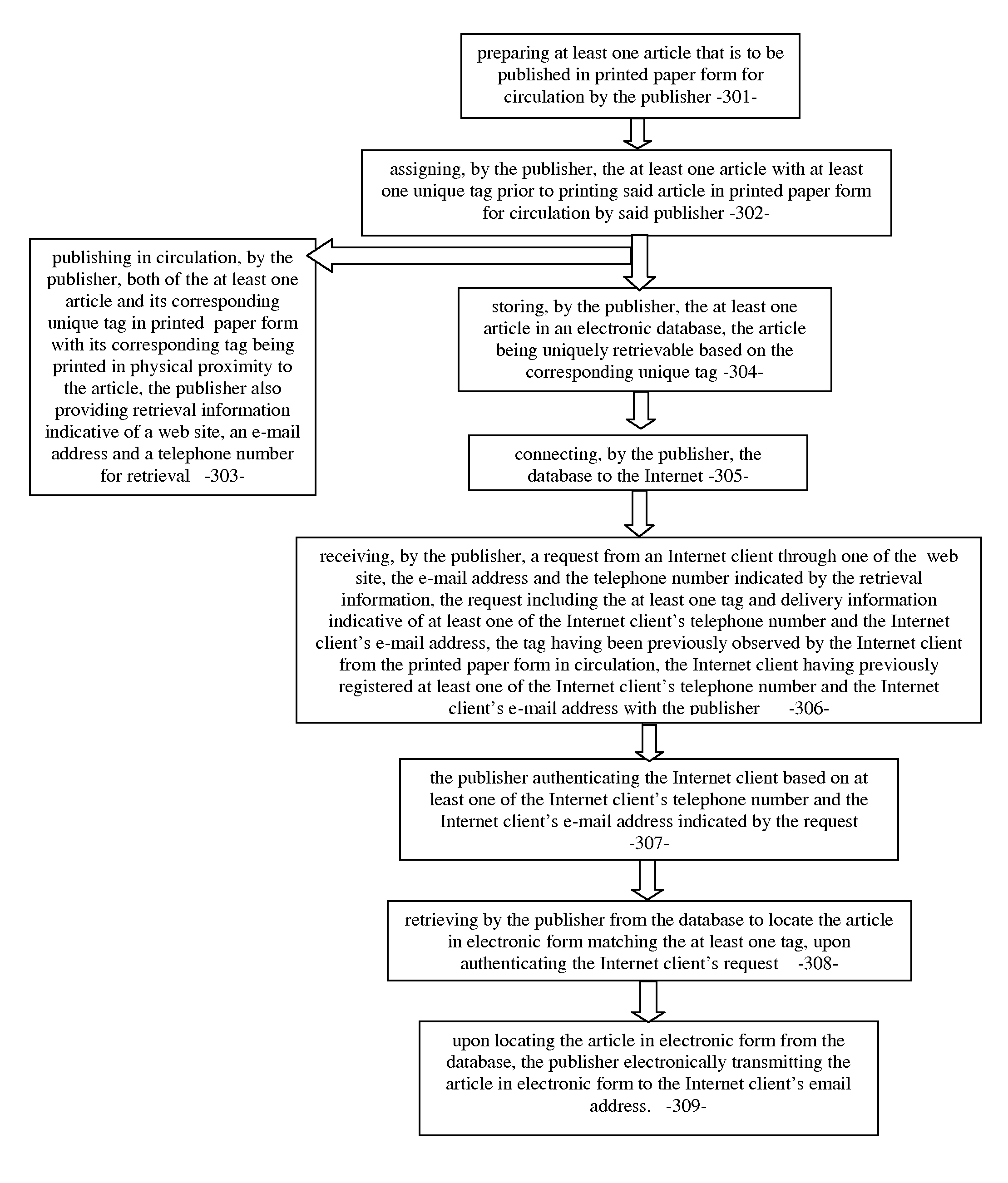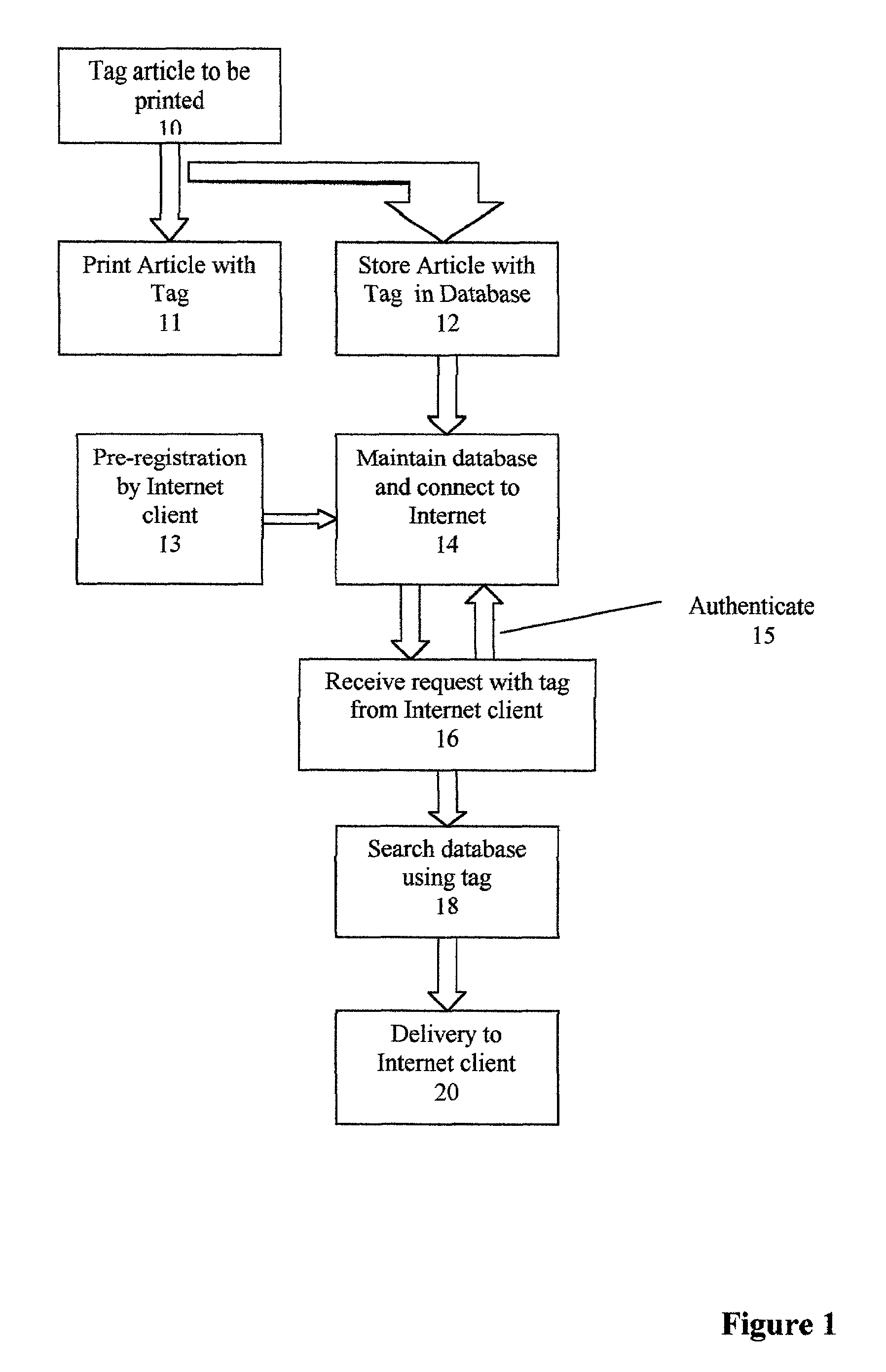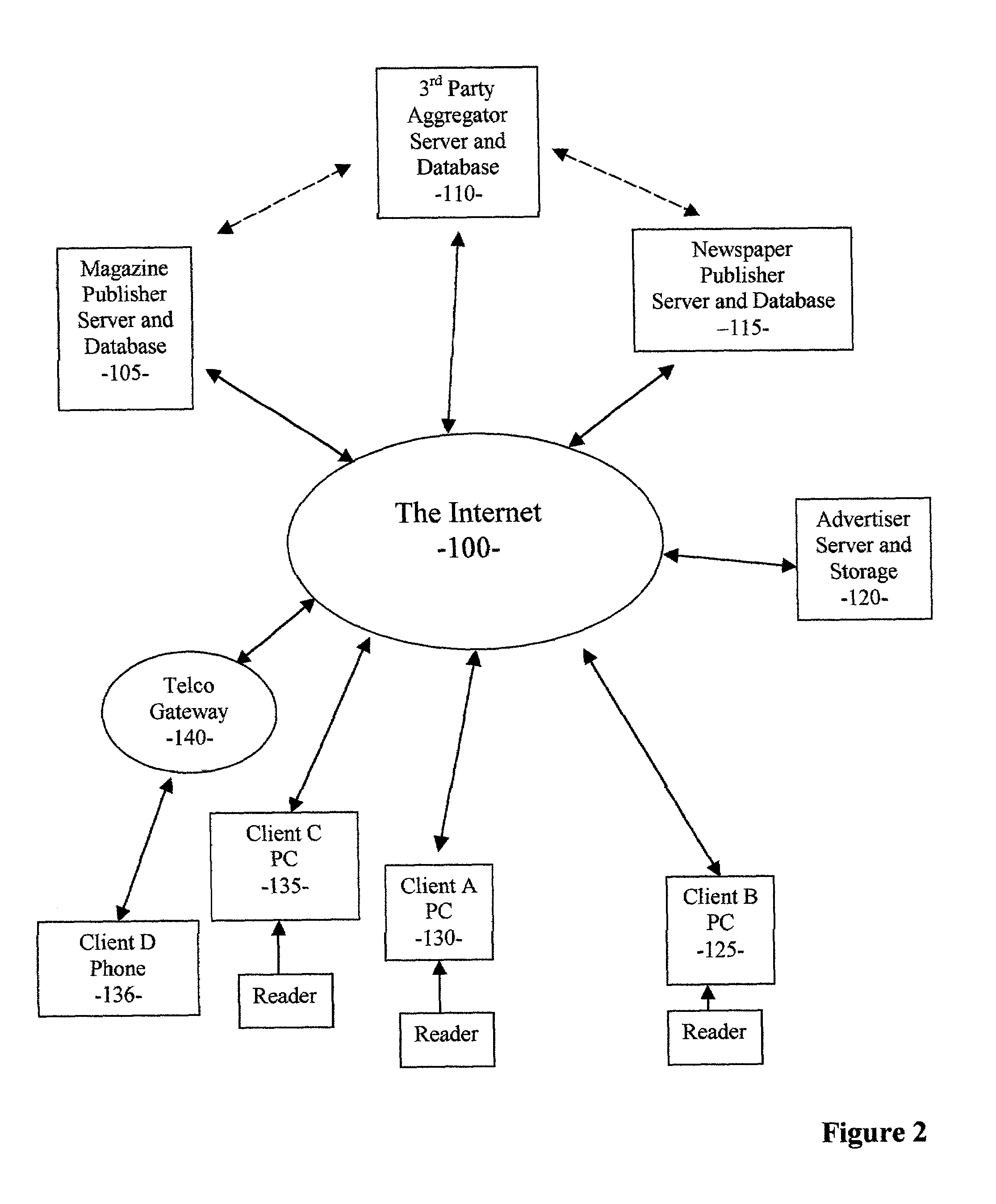Method of using the internet to retrieve and handle articles in electronic form from printed publication which have been printed in paper form for circulation by the publisher
a technology of electronic retrieval and information retrieval, applied in the field of methods, can solve the problems of not being able to meet one basic need of the general public, not being convenient, and still a major gap or disconnect between the world of printed information and the world of the intern
- Summary
- Abstract
- Description
- Claims
- Application Information
AI Technical Summary
Benefits of technology
Problems solved by technology
Method used
Image
Examples
Embodiment Construction
[0029]The present invention is directed to a method and system of using a computer or an information device to retrieve the digital version of a printed article through the Internet. In the following detailed description, numerous specific details are set forth to provide a full understanding of the present invention. It will be obvious, however, to those ordinarily skilled in the art that the present invention may be practiced without some of these specific details. In other instances, well-known structures and techniques, such as web servers, hosting, database management, Internet file transfer protocols, and telephone data entry, have not been shown in detail so as to avoid unnecessarily obscure the present invention.
[0030]The present invention may be implemented by 3rd party information aggregator, such as Yahoo, AOL, or MSN.com, to facilitate the transfer of digital format of printed information between several publishers and end-users through the Internet. The present inventio...
PUM
 Login to View More
Login to View More Abstract
Description
Claims
Application Information
 Login to View More
Login to View More - R&D
- Intellectual Property
- Life Sciences
- Materials
- Tech Scout
- Unparalleled Data Quality
- Higher Quality Content
- 60% Fewer Hallucinations
Browse by: Latest US Patents, China's latest patents, Technical Efficacy Thesaurus, Application Domain, Technology Topic, Popular Technical Reports.
© 2025 PatSnap. All rights reserved.Legal|Privacy policy|Modern Slavery Act Transparency Statement|Sitemap|About US| Contact US: help@patsnap.com



